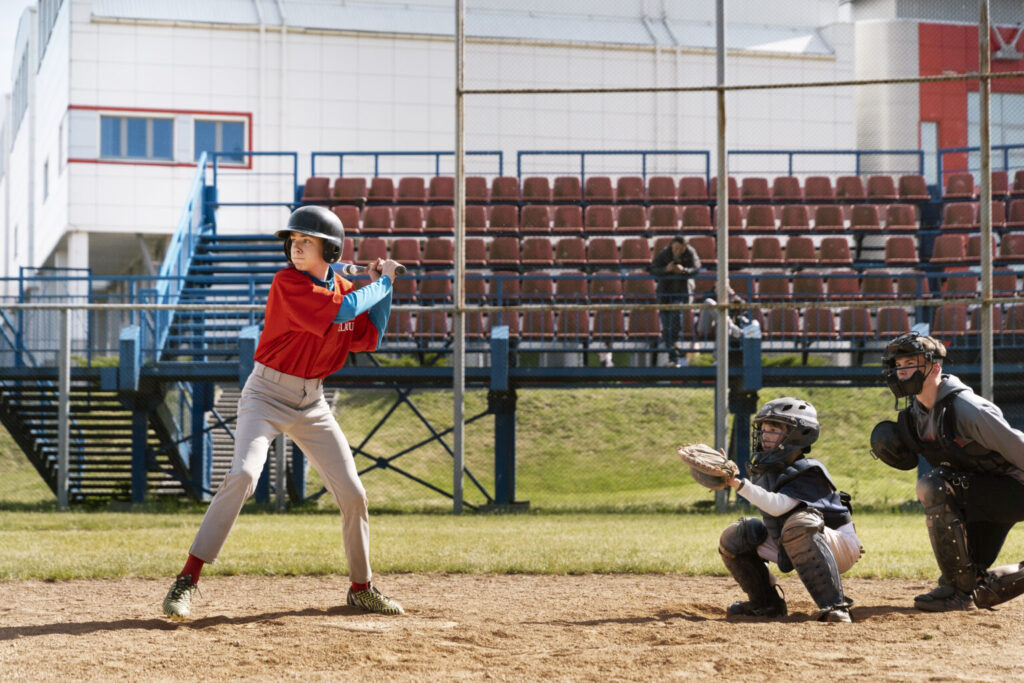
Baseball Recruiting Video
In today’s competitive sports environment, a well-produced Baseball Recruiting Video can be the game-changer that helps an aspiring athlete stand out among thousands of high school players. College recruiters are constantly looking for top talent, but they can’t attend every game or tournament. That’s why a high-quality video showcasing your skills, athleticism, and game intelligence is essential.
Whether you’re a parent filming your child or a student-athlete taking control of your recruiting process, understanding how to film effectively can significantly improve your chances of being noticed. Below are essential filming tips to help you produce a standout recruiting video that opens doors to college baseball programs.
1. Understand What Recruiters Are Looking For
Before picking up a camera, it’s important to understand the purpose of a Baseball Recruiting Video. Coaches aren’t expecting a cinematic masterpiece—they’re looking for raw skills, athletic ability, and the potential to develop.
Recruiters typically want to see:
- Mechanics: pitching, hitting, throwing, fielding, and base running.
- Game footage: a few high-quality clips showcasing in-game decision-making.
- Position-specific drills.
- Athleticism: speed, agility, strength, and coordination.
Each of these components should be captured to give a comprehensive picture of the athlete’s skill set. For more insight into what coaches look for, you can find out more from college recruitment platforms and current NCAA guidelines.
2. Plan Your Video Layout Strategically
A well-structured video holds a coach’s attention longer and makes it easier for them to assess your talent.
Suggested layout:
- Intro (10-15 seconds): Name, graduation year, position(s), height, weight, GPA, contact info, and link to a full profile or highlight reel.
- Skills Footage (2-3 minutes): Hitting, throwing, pitching, fielding, catching, etc.
- Game Highlights (1-2 minutes): Clips of real-time performance against opponents.
- Athletic Testing (optional): 60-yard dash, vertical jump, etc.
Keep the total video under 5 minutes. If recruiters want more, they’ll request it. To see successful formats, check over here for samples from top-rated recruiting services.
3. Use the Right Equipment
You don’t need Hollywood-level gear, but using appropriate equipment makes a big difference in video quality.
Essentials:
- Camera: A modern smartphone with 4K capability is acceptable, but a DSLR or camcorder with stabilization will enhance quality.
- Tripod: Keep the camera steady. Shaky footage is distracting and unprofessional.
- Microphone (optional): For narration or coach interviews.
- Lighting: Natural daylight is best. Avoid filming against the sun to prevent dark silhouettes.
Always do a test run before recording drills or games. You want to ensure lighting, focus, and framing are all on point.
4. Capture Multiple Angles
Different skills require different camera perspectives.
- Pitchers: Capture from behind the mound and the side to show mechanics and velocity.
- Hitters: Film from behind the backstop and the open side to showcase swing and contact.
- Infielders/Outfielders: Show range, arm strength, and accuracy from both wide and close-up shots.
- Catchers: Include pop time, blocking, and throws to second from behind and side views.
Varying angles give coaches a 360-degree view of your capabilities. For visual examples that demonstrate effective angle usage, go right here.
5. Keep It Simple and Professional
Don’t over-edit your footage with music, slow motion, or special effects. Keep transitions clean and avoid distracting text overlays. Use subtle captions only when necessary, like identifying your number in a game or highlighting metrics (e.g., 6.9s 60-yard dash).
When editing, focus on:
- Cropping out irrelevant footage.
- Trimming downtime between plays.
- Highlighting your best moments first.
Recruiters often watch only the first 30–60 seconds—make those count.
6. Highlight Academic and Personal Info
College programs care about academics just as much as athletics. Include your GPA, SAT/ACT scores (if applicable), and any extracurriculars or leadership roles. If you have a personal website, online profile, or Hudl link, include that at the end.
Make sure your email address and phone number are easy to find. If a coach likes what they see, they need a quick way to reach you.
7. Update Regularly
As your skills improve or your body changes, so should your recruiting video. Update your footage every 6–12 months or after standout performances. If you’re unsure when to update, check over here for guidelines from experienced recruiters.
8. Get Feedback Before Sending
Before distributing your video to coaches or uploading it to platforms, get feedback from:
- High school or club coaches
- Former college players
- Recruiting service professionals
They can provide constructive criticism and help you fine-tune your footage for maximum impact.
9. Distribute Smartly
Once your video is polished and ready, send it directly to college coaches—especially those from programs that match your skill level and academic goals. Include a personalized email that introduces you, explains why you’re interested in their program, and links to your Baseball Recruiting Video.
Also, upload it to your social media, recruiting profiles, and platforms like Hudl or YouTube. Just make sure the title and thumbnail look professional.
Final Thoughts
Creating a strong Baseball Recruiting Video takes planning, precision, and purpose. This is your digital first impression—make it count. By focusing on clear footage, proper angles, and relevant content, you can significantly boost your visibility among college coaches.
Remember, while the video is crucial, it’s just one part of the recruiting process. Combine it with a strong academic profile, consistent performance, and proactive outreach to get the most from your efforts.
Want more advice from college recruiters and former athletes? Find Out More through trusted Baseball Recruiting Video resources and always be prepared to take the next step in your baseball journey.





